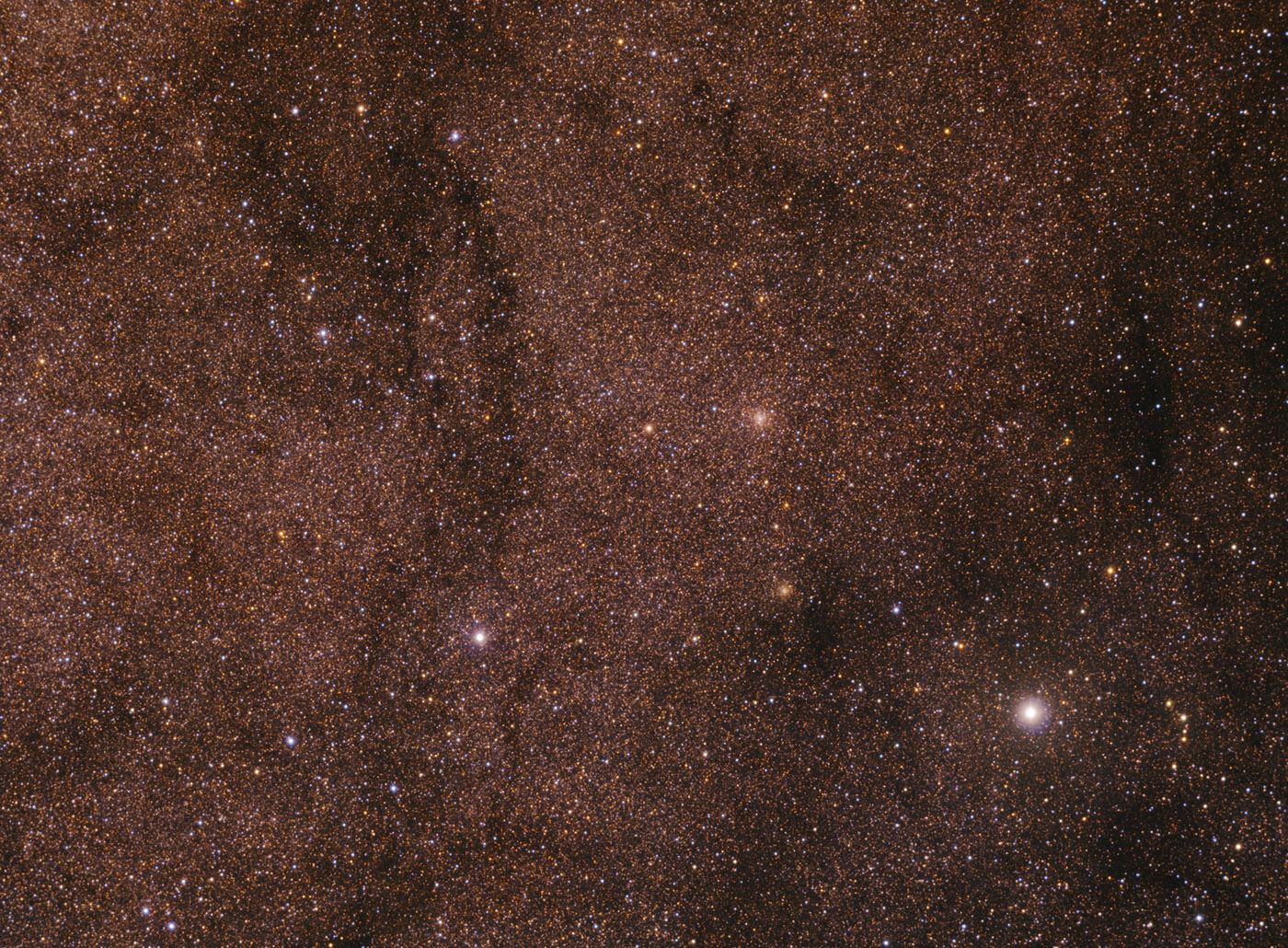Baade's Window is frequently used to study distant central bulge stars in visible and near-visible wavelengths of light. Important information on the internal geometry of the Milky Way is still being refined by measurements made through this "window". It is in the direction of the constellation of Sagittarius. The window is now known to be slightly "south" of the main central galaxy bulge. The window is irregular in outline and subtends about 1 degree of the sky. It is centered around the globular cluster NGC 6522 visible in this image. The bright star down at the right is Gamma Sagittarii and shines at magnitude 2.98
